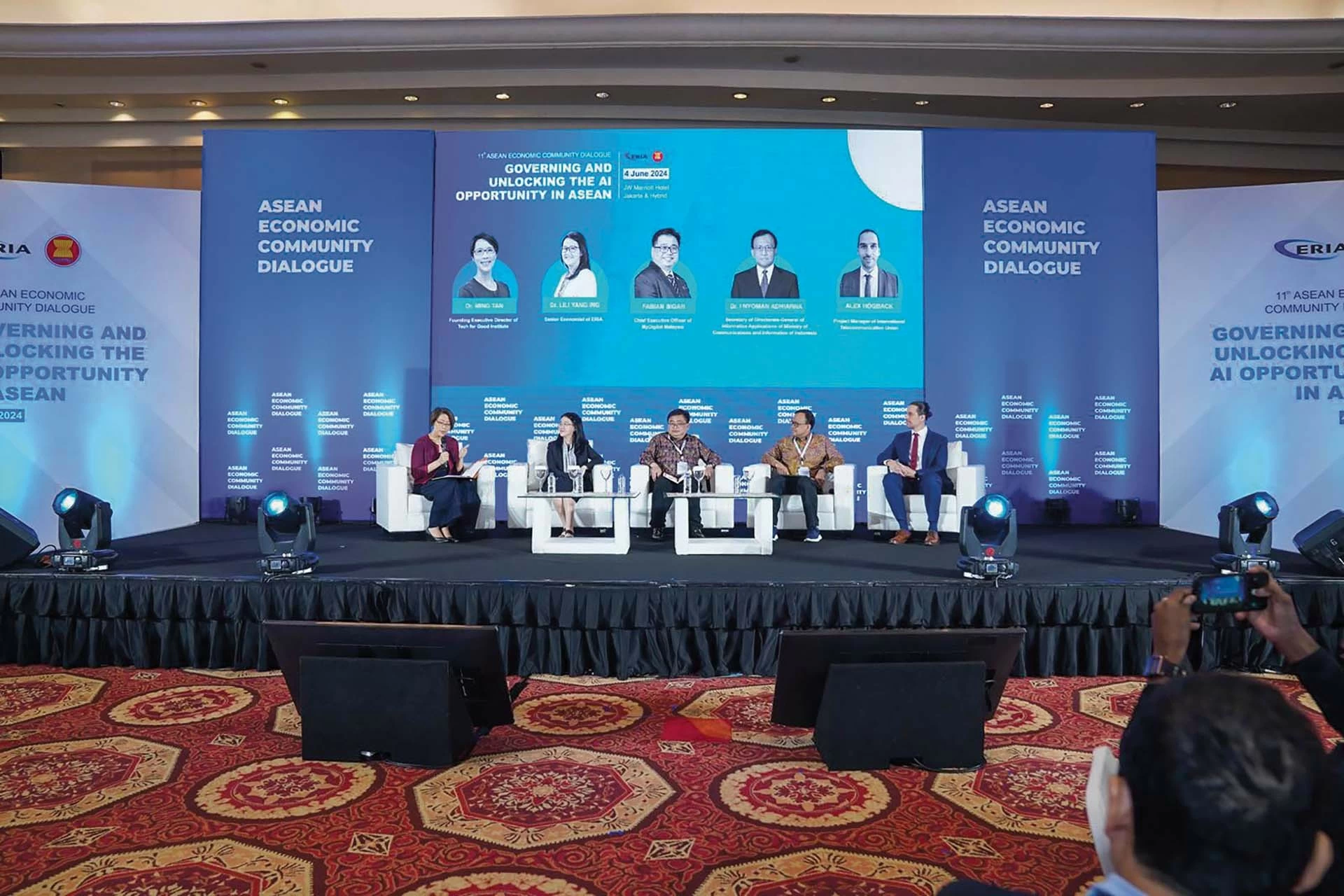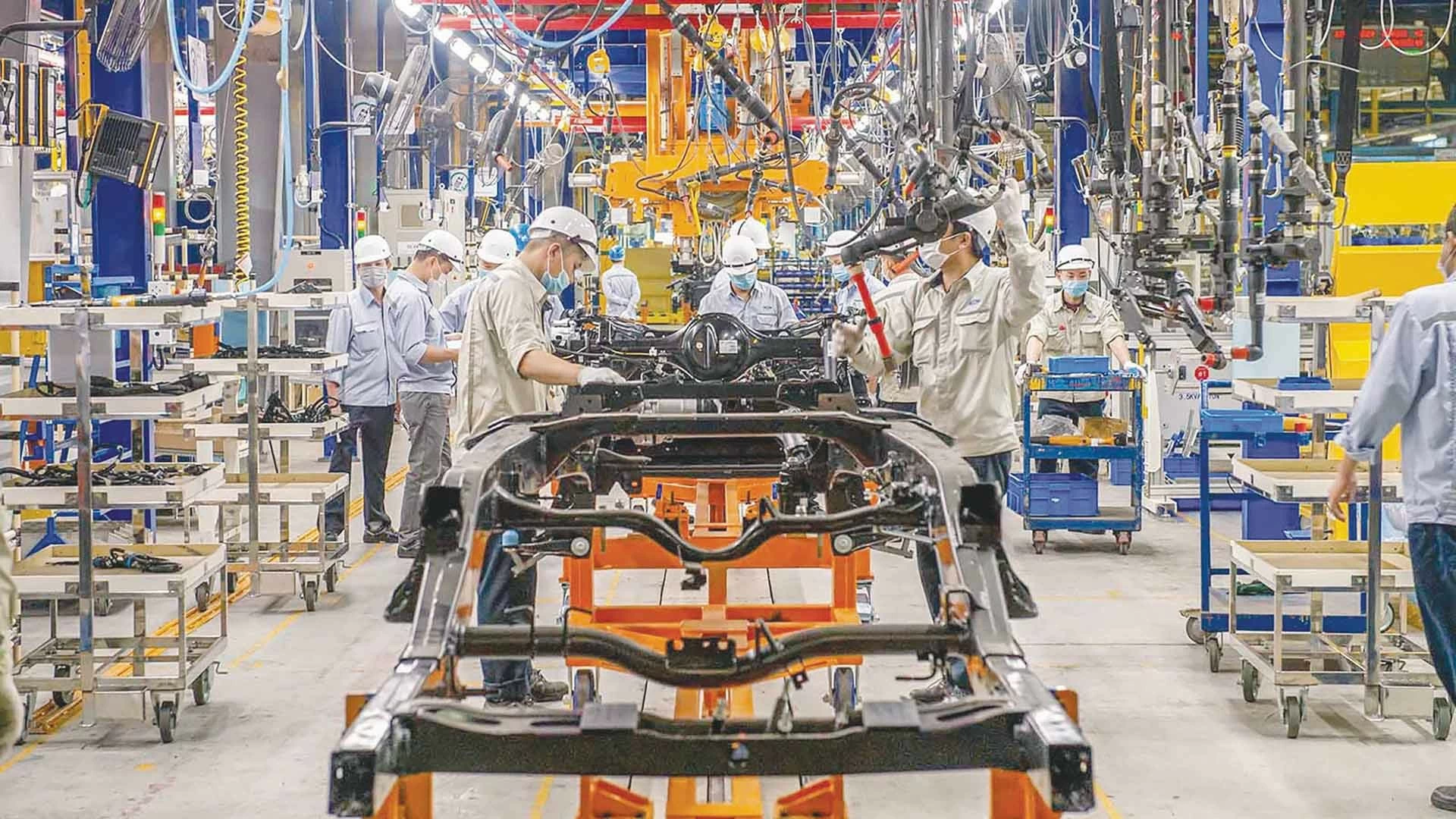
AEC - Hub of multilateral cooperation agreements
Latest
 |
| The 11th AEC Dialogue on June 4, 2024 in Jakarta, Indonesia aims to develop unified AI regulations and standards across the region, facilitating cross-border cooperation. (Source: ASEAN Secretariat) |
On December 31, 2015, at the 27th ASEAN Summit in Kuala Lumpur (Malaysia), the ASEAN Community (AC) was officially established with three pillars: the ASEAN Political-Security Community (APSC), the ASEAN Economic Community (AEC) and the ASEAN Socio-Cultural Community (ASCC). The AEC not only creates a synergistic strength for the regional economy but also responds to and overcomes regional and global economic crises.
Preparing for a proactively adaptive ASEAN.
After nearly 10 years of implementing AEC 2025, the ASEAN region has achieved many impressive successes. With a population of nearly 700 million and a GDP of nearly 4 trillion USD, ASEAN is a large, dynamically developing and promising economic zone. Over the past decade, intra-ASEAN trade has reached about 750 billion USD. Foreign direct investment (FDI) into ASEAN has increased to 236 billion USD in 2023, up 24% from the annual average of 190 billion USD in 2020-2022. Intra-ASEAN investment has increased for the third consecutive year to a record 28 billion USD in 2022, becoming the second largest source of investment after the United States. ASEAN’s share of global FDI has also increased to 17% from 15% in 2021.
ASEAN has become a single market and production on the basis of an economic community. The AEC is expanding, attracting increasing attention from trade partners. ASEAN has signed many bilateral free trade agreements (FTAs) with a series of partners such as Japan, Korea, China, Australia, New Zealand, India, etc. prominantly identified by the Regional Comprehensive Economic Partnership (RCEP) with China, Japan, Korea, Australia and New Zealand; an FTA under negotiation with Canada and the possibility of signing FTAs with other traders such as the European Union (EU) to bring more benefits from free trade to citizens in the bloc.
2022 marks a turning point for the regional economy when countries reopen the trades, gradually recover and improve self-reliance, with greater contributions from manufacture, transportation and tourism, thus the regional growth is basically stable. Faced with the impact of geopolitical fluctuations, along with many potential challenges and risks, ASEAN has shifted its strategy, taking advantage of new drivers, through new initiatives such as: Circular Economic Framework, Carbon Neutrality Strategy, ASEAN Digital Economic Framework Agreement, ASEAN One Health Initiative, and Blue Economy Framework... This is the luggage for an ASEAN to proactively adapt to opportunities and challenges towards the goal of sustainable development, inclusion and enhancing self-reliance for the region.
Dr. Denis Hew, Senior Researcher at the Center for Asia and Globalization, Lee Kuan Yew School of Public Policy (Singapore) said that since the establishment of the AEC, there has been an increase in intra-bloc trade in industrial goods, spare parts and components. Since then, many economies in ASEAN have promoted the industrialization process and become part of a larger global value chain, not only in the region but also including China and major economies in the world.
“A strong FDI inflow into ASEAN and the increasing diversity could be recognized. If you go to Singapore or Malaysia, you will see many large companies such as Intel building semiconductor factories. Regarding Thailand - the center of the regional automobile industry, huge multinational companies such as Honda and Toyota are building production networks to export to the world. Income growth and GDP per capita in many ASEAN countries have increased significantly in recent times,” Dr. Denis Hew cited.
The report “Building the ASEAN Economic Community beyond 2025” by the Center for Asia and Globalization, Lee Kuan Yew School of Public Policy recently confirms that the AEC is in the final stage of implementing the Second Plan - the AEC Blueprint 2025, in the context of the rules-based multilateralism that lays the foundation for ASEAN economic integration being threatened by geostrategic competition and increasing protectionism. “The post-2025 ASEAN visioning process is ongoing. A vision document spanning two decades has been drafted for adoption in 2025. The development of successors to the ASEAN Community Blueprints, including the one for the AEC, is underway. For the AEC, the next strategic plan –likely be named as such – will have a shorter time span of five years, aiming for greater agility in responding to the rapidly changing context.”
 |
| AEC integration helps increase Vietnam’s attractiveness in the eyes of foreign investors (Source: VnEconomy) |
Increasing Vietnam’s attractiveness
As one of the active and dynamic members since joining ASEAN, Vietnam has always played a leading role in the bloc’s activities, building the AC in general and the AEC in particular. Vietnam has a large market for exports to ASEAN member countries and opportunities to access a wider market. Participation in the AEC supports Vietnam in implementing extensive and comprehensive economic cooperation with countries in the region and the world. Vietnam has implemented AEC commitments, signed FTAs with the EU, South Korea, the Eurasian Economic Union (EAEU); participated in new generation FTAs such as the Comprehensive and Progressive Agreement for Trans-Pacific Partnership (CPTPP) and RCEP.
Apart from those agreements, Vietnam also has the opportunity to access support sources in science and technology, learn advanced management experiences, contributing to improving the qualifications and capacity of its staff and training high-quality human resources. At the same time, taking advantage of practical benefits from cooperation programs on narrowing the development gap.
The positive impact of the AEC also contributes to changes in the construction and completion of domestic policies, laws and procedures, promoting Vietnam to reform economic institutions, perfecting shortcomings to ensure better compliance with international integration requirements. AEC integration also forces Vietnam to perfect the legal corridor to build trust with investors and increase competitiveness. Deep participation in ASEAN economic integration helps increase Vietnam’s attractiveness to investment and business from outside the Association, attracting more FDI capital flows outside the Association, especially from multinational companies, while expanding the market for Vietnamese goods and services.
In the context of the total FDI capital investment worldwide continuing to decline, Vietnam is one of the countries in the AEC that still “keeps pace” in attracting FDI capital quite well. According to the Foreign Investment Agency (Ministry of Planning and Investment), in the first 7 months of 2024, the total registered FDI capital in Vietnam reached more than 18 billion USD, an increase of 10.9% over the same period in 2023. Meanwhile, disbursed capital reached more than 12.55 billion USD, an increase of 8.4% over the same period last year. Explaining the reason why Vietnam is still an attractive and long-term destination for FDI investors, Director of the Foreign Investment Agency Do Nhat Hoang affirmed that Vietnam’s strength is having a human resource with high labor productivity compared to labor costs. Vietnam is also building training programs to improve the technical skills and labor productivity of human resources; in particular, it will switch to training based on the actual needs of businesses, training with high applicability instead of the previous training model. Along with that, witnessing the efforts in the improvement of investment environment, upgrade of infrastructure conditions, and issuance of appropriate policies, the foreign investors are confident in Vietnam’s investment environment.





















